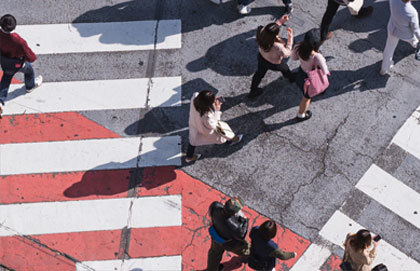The Charitable Giving by Individuals report by Martin Turcotte of Statistics Canada is a comprehensive and important summary that makes use of the 2013 General Social Survey data to outline a picture of individual charitable giving in Canada. The word charity suffers many misconceptions. On balance, it has had a long history of association with sacrificing oneself for the sake of others, an antidote to selfish absorption, careless distraction and mindless accumulation. It is a response of gratitude; an act reflecting that however little we have, that little can actually grow when it is shared with another. We may ask if this is true of Canadians. It would appear that it is. But not of all Canadians equally. Charitable giving at an individual level turns out to be lumpy.
There are many angles to consider in the report. In reading between the lines of the report and its summary data, it appears that the lone personal charitable impulse may be as rare an entity as the lone genius or heroic figure is increasingly proving to be. The report is about individual giving but even passing reflection shows that individual does not equal solitary. Giving to help other people is, it would seem, a group project even when we measure it with solitary means. In reflecting on the report, it seemed like there was a great deal of “we” shining around, through the measures of individual giving. This suggests a few things about the charitable giving of Canadians.
First, charitable donation has a context—most significantly, a religious worship context. While an increasing number of Canadians are unfamiliar with what a religious worship context is (other than perhaps seeing a TV version while passing through channels, something that even religious people would generally agree is a rather alien thing to watch), that act of gathering, praying, reading, listening, sharing, volunteering and reflecting on the meaning and purpose of life translates into actual care for other people. Religious settings are very important for charitable giving and generates a huge amount of significant care. Thin caricatures of religion that show up in popular TV and media suggest that it is outmoded, flaky, or outright harmful. Even worse, it is often presented as embarrassingly out of step with an entertainment saturated and technologically superior culture. According to the report, if religious communities are an impractical, otherworldly abstraction, our country needs more of it. In fact, we depend on religious communities (even if we aren’t part of one) to sustain many aspects of our collective quality of life.
The report also suggests that charitable donation has a physical location—a building, on some piece of property, connected to the networks of power and water we all depend on and have in common. These places are part of the physical fabric of our communities. People give to them, in them, and for them. Most of them are small, located in residential areas, and may not be impressive on their own. But there are a lot of them and a lot of people who collectively engage in them. Next time you drive past a synagogue, mosque or church, imagine that it is a peculiar engine that converts, in a very profound way, the compassion of Canadian citizens into an outpouring of billions of dollars of goodwill.
Charitable donation has a critical role to play in our local communities. It would appear that a tremendous amount of the money donated in Canada to charitable work is highly local in nature. It isn’t that we are unconcerned with helping out in other settings—we gave 1.2 billion dollars to international projects in 2013. It is clear, however, that the vast majority of our financial sharing is invested right where we live. Charitable giving is a neighbourhood, village, town, city building activity. Even where national organizations are supported, the pillars and posts that connect those cross-country projects are firmly planted in local soil.
Early research on the replacement cost for common good services provided by neighbourhood faith communities suggests that a local faith group generates a common good contribution roughly 5X greater than its annual budget—that’s 5X their annual budget every year, year after year, decade after decade. That means that the money contributed is only a small part of the story. Research that investigates these often untracked and untold realities is long overdue. If we fail to attend to the context, the location and the community-driven nature of individual charitable giving, it is likely that the social challenges we are increasingly becoming aware of will increase while the supply of social ingenuity needed to meet those challenges decreases. Minding that gap will be critical if we are concerned about the wellbeing of Canadians in the immediate and long-term future.
The primary donors (those in the top 10% of donors) are getting older (51% are over 55 years old). They are typically religious and they gave 30% more in 2013 than they did in 2004. As we consider what the charitable landscape will look like in coming decades, it is vital to pay attention to the communities of faith that develop, grow, and sustain significant charitable giving in Canada. Martin Turcotte’s report gives us pause to consider that we would do well not only to think strategically about how to encourage more individuals to give to charity, but to do more to further our understanding of the context, place, and communities out of which those individuals live their lives.






